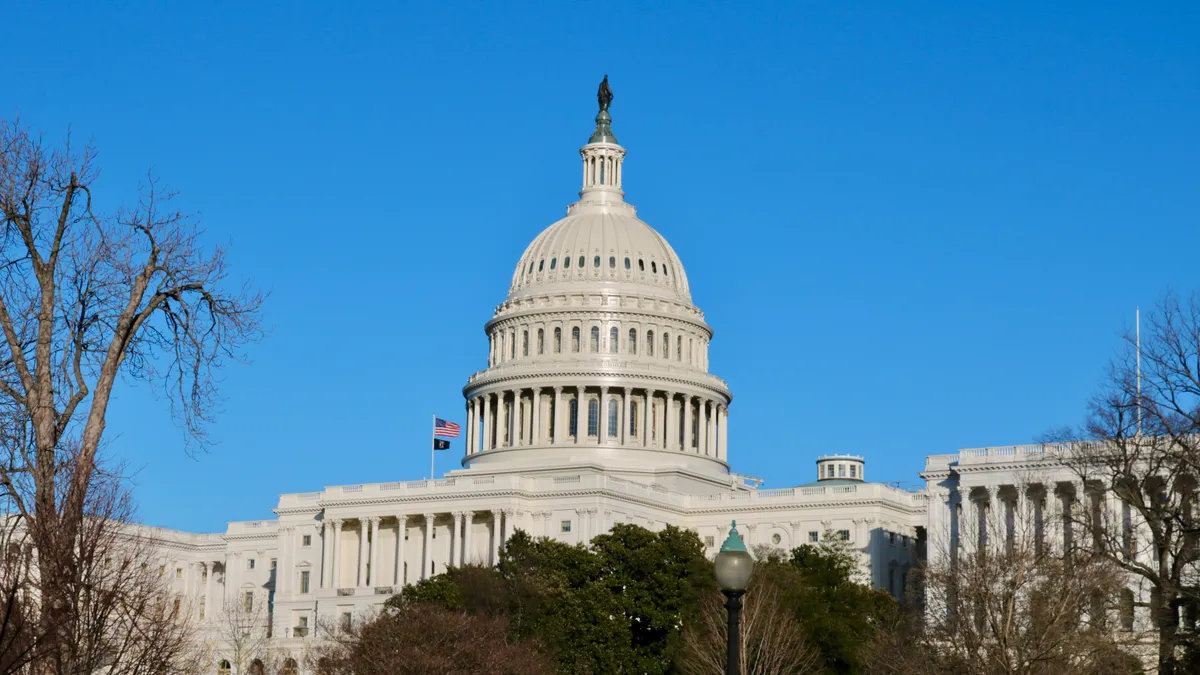Dive Brief:
-
The replacement of lead service pipes that can bring toxic drinking water into school buildings was one of education's biggest wins from the newly passed Infrastructure Investment and Jobs Act, which is expected to be signed by President Joe Biden shortly.
-
The bill includes $55 billion to deliver clean drinking water for households, businesses, schools and child care centers. The White House estimates about 400,000 schools and child care centers have unsafe water. Even low levels of lead in children's blood can have adverse impacts on cognitive development, ability to focus and academic achievement, according to the Centers for Disease Control and Prevention.
-
Although the $1.2 trillion bill also includes funding for expanding access to high speed internet, clean energy school buses, improvements to the supply chain and other potential benefits for schools, missing from the legislation is $100 billion for school modernization and construction that was part of the original proposal.
Dive Insight:
In March, Biden proposed upgrading school facilities by using $50 billion in direct grants and an additional $50 billion leveraged through bonds. The funding is much needed, according to a September report from the 21st Century Schools Fund, the International Well Building Institute, and the National Council on School Facilities, which pointed to a "massive and chronic underinvestment" in school facilities, maintenance and construction.
About $85 billion would be needed to fill the funding gap. Quality school infrastructure can support educational equity, the health of students and staff, jobs, and sustainability of land, water and energy, the report said.
"A federal role that builds state capacity to meet districts’ needs in the most underserved areas is absolutely essential to reforming this broken system," Mary Filardo, founder and executive director of the 21st Century Schools Fund, told the House Education and Labor Committee in April.
Although the omission of specific funding for school construction was a disappointment to many, they were pleased the spending package contained funding for lead pipe replacement and expanded broadband connectivity.
A 2018 Government Accountability Office report found only 43% of school districts tested for lead in their drinking water. Of those that tested, 37% found elevated levels of lead. A new Environmental Protection Agency rule is expected to require more regular testing for schools and child care centers.
Several states allow for automatic eligibility for Part C early intervention services under the Individuals with Disabilities Education Act for children ages birth to 3 if a certain amount of lead is found in a child’s blood stream, according to a 2017 survey of state Part C coordinators conducted by the Infant and Toddler Coordinators Association, a member organization of Part C state coordinators. A 2020 survey found 24% of Part C directors said their state is taking "extensive efforts" to address lead poisoning in children.
"We're excited Congress recognized the real need and the impacts for young children," said ITCA Executive Director Maureen Greer. The funding implications for each state, however, is still unknown, she said.
The infrastructure bill also includes $65 billion for broadband connections and affordability. As the pandemic forced learning online, urgency to remedy the digital divide grew.
According to EducationSuperHighway, 28.2 million households in the country do not have high-speed broadband and 18 million of those households just can't afford to connect. The need for reliable internet access is greater in rural and low-income communities, as well as in households of color.
"Black communities remain the least connected to the internet, exacerbating already-existing disparities in economic, health, and educational achievements," said a statement by the NAACP regarding the infrastructure bill.













